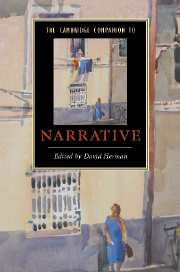1 - Introduction
from Part I - Preliminaries
Published online by Cambridge University Press: 28 September 2007
Summary
In this introduction I seek to provide context for the chapters that follow by addressing questions that many readers of this volume are likely to have - particularly readers coming to the field of narrative studies for the first time. These questions include: Why a Companion to Narrative? What is narrative (what are its identifying traits and key functions)? What are some of the major trends in recent scholarship on narrative? What are the distinctive features of this book, and some strategies for using it? My attempt to address the second of these questions (what is narrative?) is meant to be read in tandem with chapter 2, where Marie-Laure Ryan reviews recent suggestions about what constitutes a narrative and proposes her own definition. Conversely, this introduction should afford a sense of the broader research tradition from which attempts to define narrative have emerged.
The working definition that I myself will be using in this introduction, and that I spell out in greater detail below, runs as follows. Rather than focusing on general, abstract situations or trends, stories are accounts of what happened to particular people - and of what it was like for them to experience what happened - in particular circumstances and with specific consequences. Narrative, in other words, is a basic human strategy for coming to terms with time, process, and change - a strategy that contrasts with, but is in no way inferior to, “scientific” modes of explanation that characterize phenomena as instances of general covering laws.
- Type
- Chapter
- Information
- The Cambridge Companion to Narrative , pp. 3 - 21Publisher: Cambridge University PressPrint publication year: 2007
- 19
- Cited by

